Salento,Apulia is a friendly land that enchants and pampers its visitors persuading them to stay on. Visitors experience a sense of nostalgia and miss this enchanted land even before leaving. The history of Salento stretches back over two thousand years. If you are considering buying a house in Sale ...
Building techniques in the region of Salento
Building techniques in the region of Salento
Travelling around Salento, it is still possible to find the traces of the ancient peoples that have made this corner of Italy a splendid and unforgettable place. This is true for the wonderful coasts and the charming hinterland, but also for the work of man. Architecture, for example, shows the great engineering and technical ability of the people of Salento: the superb arches, the magnificent barrel vaults and the enchanting cross vaults that are present in the old buildings are a proof of builders’ skilfulness.

The urban fabric that has characterised the villages in the region of Salento is still perfectly preserved thanks to the preservation of all those economic and social conditions that have originated it. It expresses a great harmony between the urban environment and the countryside, between the community’s need to find resources and the goods offered by nature. Built-up areas have had a substantially horizontal development around important street axes or around the main square of the village in which there are the main church and the bell tower.
The inhabitants of Salento used a tender calcareous stone to build their houses and with the stones they took from the soil they also erected dry-stone walls to bound their fields and shelters in the fields. Those shelters became houses in which an entire family lived. Shapes are different, but the building technique is always the same; indeed, they have a dome-shaped roof.

The technique used to build vaulted ceilings is very old. It derives from the building ability of the Romans, but it has been adapted to the materials available in the region of Salento: the stone of Lecce is a sedimentary rock that can be easily worked and grants solidity and durability, at the same time.
Builders used to build several types of vaults: timbrel vaults, star-shaped vaults and cross vaults.
Timbrel vaults are similar to double barrel vaults, but its centre is held in a cap closed by a keystone that exerts the right thrusts that grant the balance of the entire structure. All the forces are released on the four lateral pillars. This kind of vaults is suitable for the building of small and medium-sized rooms because the round lateral arch would make the structure too high.
Star-shaped vaults have an L-shaped corner pillar. This kind of vaults was suitable for large rooms – of at least 36 square metres. Houses were built using almost exclusively this technique that granted high durability and resistance to collapses and to the wear and tear of time. This kind of vault guarantees excellent heat insulation, above all during the summer, when the torrid climate of Salento can be merciless. Today, there is a rising interest in vaulted houses, since masters propose the building of this kind of roof and the renovation of old ones.

Cross vaults derive from the intersection of two barrel vaults. They are limited by four perimetrical arches.
At the moment, property investors are showing a revived interest in this kind of constructions, as they consider the old “pajare” and star-vaulted homes as ecological and healthy buildings made using natural local materials.
The materials that will be used to build an ecological house must be chosen very carefully, since their value goes beyond the function for which they are used. They are part of a complex system in which everything must contribute to the well-being of people who live there.
The choice of the materials must not be carried out superficially. It is necessary to assess the consequences they might have on the domestic environment, which means on the internal climate of the house, on the people who live there and on the sturdiness of the house.
When selecting the proper building material, it is a good idea to take into account that local materials are bound to the climate, the culture and living habits; therefore, their impact on health has already been tested. The material used to build a house should be suitable to maintain the right temperature inside, independently from weather conditions. Despite this, walls must be built in order to grant natural ventilation so that dampness does not originate mould. Walls must have a good hygroscopicity, which means that the material must absorb and release steam. Bricks made of tufa, carparo and stone of Lecce and lime plaster are hygroscopic.
Investors looking for profitable investment opportunities have a wide range of appealing purchase possibilities at their disposal in this magic region. They can buy old manor houses and farms in need of renovation to convert them into comfortable tourist accommodation facilities, a vacation home to use it as their own holiday home, an agricultural land, an olive grove, a beachfront apartment with a car parking space in a famous seaside resort, a building plot of land, a cottage or a flat in co-ownership.
Click on the following links to learn more about the real estate opportunities available in the enchanting Salento:
- Investing and living in the region of Salento
Related Insights
-
Properties for sale Salento
-
Sell houses in Apulia Salento, sell house online free, buy homes, houses, insert a free advert about properties in Apulia Salento
Salento is a beautiful region in the Southern part of Apulia, Italy. The real estate property in Apulia is attracting the interest of many foreign investors. Foreign citizens choose primarily real estate properties in the countryside. They are interested in renovating rural homes to use them as thei ...
-
Investing and living in the region of Salento
Investing and living in the region of Salento Salento is imposing itself as the ideal destination for real estate investments. “The real estate market of Salento offers great investment opportunities, both in the hinterland and on the coast” – explains Antonio Magurano, the person re ...
-
Affordable real estate investments in the region of Salento
Affordable real estate investments in the region of Salento In the charming Grecia Salentina, there are many old palaces in need of renovation for sale The region of Salento – in southern Apulia – is widely known for being a region of magic, a colourful and lively area that welcomes its visito ...
-
Building techniques in the region of Salento
Building techniques in the region of Salento Travelling around Salento, it is still possible to find the traces of the ancient peoples that have made this corner of Italy a splendid and unforgettable place. This is true for the wonderful coasts and the charming hinterland, but also for the work o ...
-
MUST SEE...Salento
Among the places you must see there is the white Santa Maria di Leuca, the old “Finibus Terrae”, one of the extremities of Italy, the exact merging point of the Adriatic and Ionian seas, where the borderline between East and West, past and present, history and legend becomes imperceptible. It will s ...
-
Villas for sale in Apulia Salento, luxury property, luxury homes for sale, cottages, luxury house for sale in Apulia Salento
Salento is an attractive region located in the Southermost part of Apulia. Sea, Sand and Sun tourism is well developed but the attention of visitors is addressed also to alternative tourism opportunities. Are you interested in investing in the property market of Salento? Rely on professional and exp ...
-
House for rent in Salento Apulia, home rentals, homes for rent, apartments, condos, town homes, apartment rentals and rental homes in Salento Apulia
Are you thinking of spending your holidays in Salento? You will be delighted to taste the excellent strong and intense flavour of the local dishes made using the fresh and genuine products provided by the land. Salento is also the perfect place for water sports lovers. It is possible to take part in ...
-
Summer goes on in the region of Salento
Italy: Salento – the magic land of the sun, the sea and the wind – welcomes you with its spectacular wines, delightful sweets, ancient villages and old manor houses. Summer has finished on the calendar, but if you still want to enjoy the sea and relax on the beach, choose the coasts of Salento. I ...
Real Estate Listings
For sale Farmland, Italy, Lecce, Copertino, Contrada San Vito

For sale
Farmland
38040 m²
For sale House, Italy, Lecce, Lecce, Via Luigi Scarambone, 21
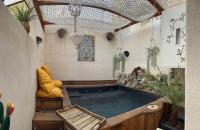
For sale
House
82 m²
For sale Other (Residential), Italy, Lecce, Patù, Via Generale Armando Diaz

For sale
Other (Residential)
460 m²
For sale Building, Italy, Lecce, Patù, Via Generale Armando Diaz
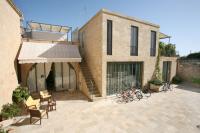
For sale
Building
460 m²
For sale 3 Bedrooms, Italy, Lecce, Lecce, Via Corvaglia

For sale
3 Bedrooms
118 m²
For sale Other (Land), Italy, Lecce, Palmariggi, contrada Montevergine
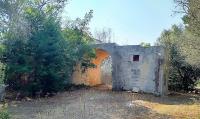
For sale
Other (Land)
50000 m²
For sale Farmhouse, Italy, Lecce, Muro Leccese, Via Cesare Battisti 25
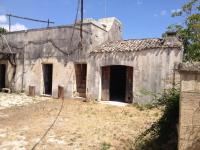
For sale
Farmhouse
1100 m²
For sale Trullo, Italy, Lecce, Patù, Patù San Gregorio
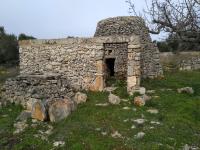
For sale
Trullo
2500 m²
For sale Farmhouse, Italy, Lecce, Patù, Presicce
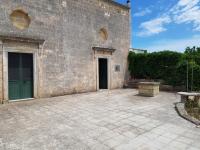
For sale
Farmhouse
2500 m²
For sale House, Italy, Lecce, Casarano, via biancamano, 3

For sale
House
65 m²
